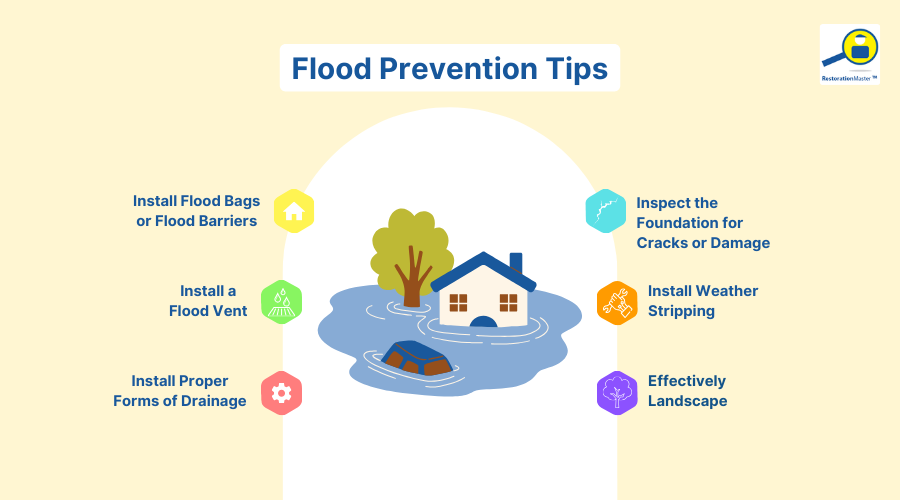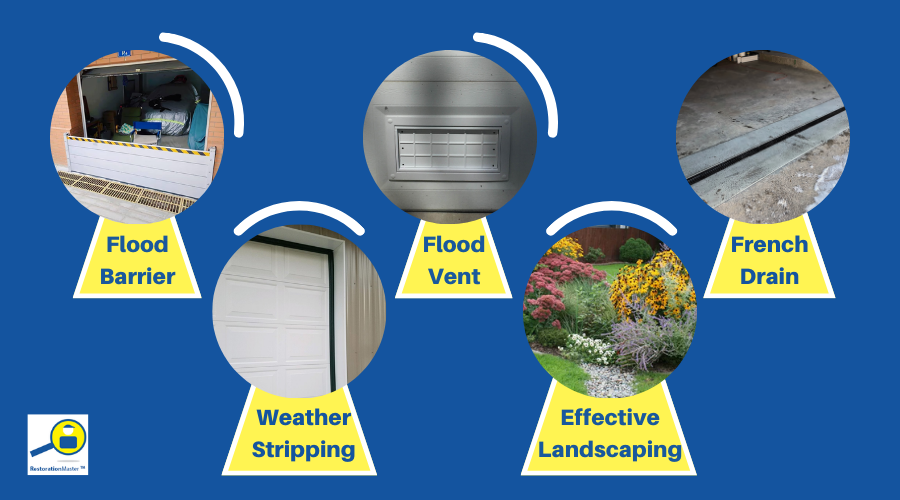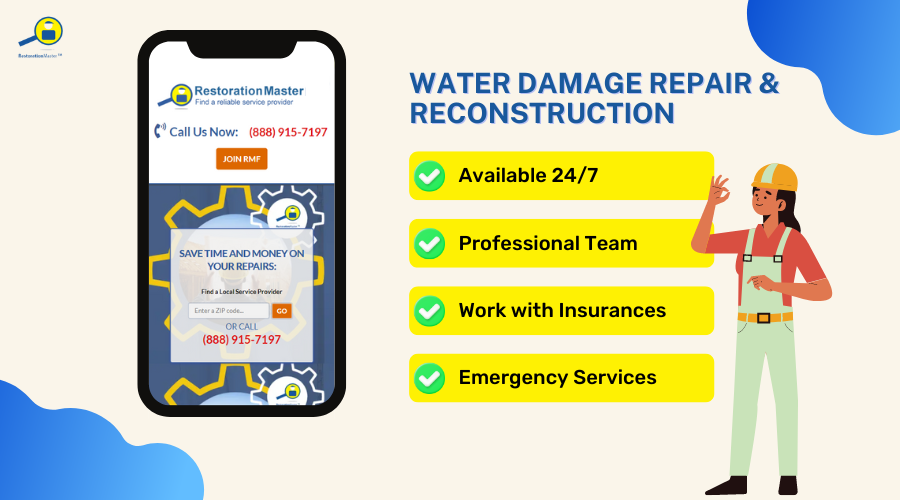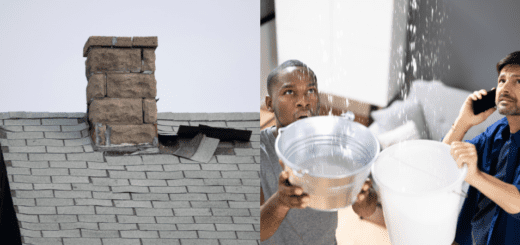Flooding Prevention: How to Prevent Water Damage in Your Garage
As the seasons change and spring begins to approach quickly, it is important to ensure your home can handle increased rainfall and the potential of floodingFlooding is the overflow or accumulation of water in areas t... More. Flood preventionPrevention refers to actions taken to reduce the likelihood ... More during this time is crucial as melting snow and seasonal storms can leadLead is a heavy metal that can be toxic to humans, especiall... More to overwhelmed drainage systems. Throughout your home, your garage and foundation are the first areas of your property to become affected by floodingFlooding is the overflow or accumulation of water in areas t... More. This can result in thousands of dollars in repairs if proper precautions are not taken.

Garage Flooding Prevention Tips
Using effective flood prevention strategies are essential to protect infrastructure, personal belongings, and the natural landscape. These methods are essential to prevent immediate damage and protect the long-term value and functionality of your home. However, there are a number of steps you can take to ensure that you don’t become a victim of water damage. Therefore, when preparing for rainstorms, be sure to follow these tips.
Install Sandbags or Flood Barriers
As soon as that first rainstorm hits, the water will find every small crack, spreading the damage over time. Eventually, it will find its way to your garage and cause significant water damage to the drywall. However, you can prevent this before it starts by placing flood barriers or sandbags around the cracks between the doors and garage. When coming into contact with water, the barriers will expand to create small dams and prevent the water from seeping into your home.
How to correctly use sandbags to prevent water damage:
- Acquire the sandbags or flood barriers from local hardware stores, emergency management agencies, or community centers.
- Identify the areas most vulnerable to floodingFlooding is the overflow or accumulation of water in areas t... More, such as the bottom lining of the garage and the corners.
- For additional floodingFlooding is the overflow or accumulation of water in areas t... More preventionPrevention refers to actions taken to reduce the likelihood ... More, lay a plastic sheet underneath where the sandbags will be placed.
- Place the sandbags tightly together – staggering the rows to ensure they lay tightly.
- Press down on each sandbag to remove any remaining gaps.
- During the rainfall, check on the sandbags to verify there are no gaps or holes for water to seep in.
Install a Flood Vent
Although flood vents do not prevent water from entering a structureStructure refers to the framework or components of a buildin... More, they help manage how water enters and exits, reducing the overall damage. Flood vents help prevent the buildup of hydrostatic pressure on the walls and foundation of the structureStructure refers to the framework or components of a buildin... More. If the pressure is not equalized, the risk of significant structural damage arises. Some areas may still be exposed to water, but flood vents will overall decrease the possible damage. With significantly low water levels, you can ensure your living space is not affected.
Install Proper Forms of Drainage
While the street is equipped with storm drain systems to protect your home against floodingFlooding is the overflow or accumulation of water in areas t... More, they can easily become overflowed during flash floods. In these situations, it is the homeowner’s responsibility to prevent their home from pooling water. Installing a French drain (or trench drain) in front of your garage will divert water away from vulnerable areas. These drains have a narrow channel with grates on top to prevent water from pooling and floodingFlooding is the overflow or accumulation of water in areas t... More driveways and garages.
It is important to prevent the drain from leading the water towards your neighbors’ homes, sidewalks, or a dirt slopes without protective plants to soak up the water.

Inspect Your Foundation for Cracks or Damage
One of the most important steps for preventing water damage in your garage is to check every crack within the cement. Even the smallest cracks can become more damaged as they come into contact with more water. Identifying and fixing any noticeable cracks is crucial to prevent water accumulation within these spaces, which could increase the chances of floodingFlooding is the overflow or accumulation of water in areas t... More over time.
To avoid this problem in the future, you can seal the crack properly with a fresh coat of waterproof paint or vinylVinyl is a durable synthetic plastic material commonly used ... More concrete patch. However, you might want to think about hiring restoration professionals for the larger damages.
Install Weather Stripping Under the Garage Door
Installing weather stripping is helpful because it seals gaps around doors and windows, effectively preventing against rainstorms, snow, and sleet. Sealing gaps where water could infiltrate helps maintain the integrity of the building and minimizes interior water damage. Not only does water stripping a simple and cost-effective flood preventionPrevention refers to actions taken to reduce the likelihood ... More method, it also improves energy efficiency by preventing drafts and air leaks.
If you already have weather stripping around your garage, you should regularly inspect its condition for cracks and dryness. If it needs to be replaced, it is recommended to install a replacement weather stripping instead of self-adhesive tape, rubber, or vinylVinyl is a durable synthetic plastic material commonly used ... More stripping; these materials are cheap and will not effectively protect against friction or floodingFlooding is the overflow or accumulation of water in areas t... More.
Create an Effective Plan for Landscaping
While a landscaper’s job is to make the yard look beautiful, they can also coordinate the flow of underground water by planting the appropriate vegetation in specific areas. As bushes, grass, and trees will absorb a certain amount of water, the slope of the yard will determine where excess water will flow. Other landscaping features like gravel, porousPorous describes a material that contains small openings or ... More pavement, and graded slopes help absorb excess rainwater and mitigateTo mitigate is to reduce or limit the severity of damage, ri... More the impact of water.
There are various ways that landscapers can strategically place landscaping elements to prevent damage done by water. Specifically implementing some of these methods near the end of the garage can help slow the flow of water and prevent it from damaging items.

What to do When You Experience Water Damage
While these steps will certainly help prevent damage from a flood, there is no guarantee that they will work 100% of the time. If floodingFlooding is the overflow or accumulation of water in areas t... More occurs in your garage, foundation, or any other area of your property, it is important to take immediate steps to mitigateTo mitigate is to reduce or limit the severity of damage, ri... More further harm and begin the restorationRestoration is the process of returning a property to its pr... More process.
- Safety First: Prioritize the safety of yourself and others. If the water is contaminated, evacuate the area and seek professional help immediately.
- Assess the Damage: Investigate the extent of water damage and take photos for insurance purposes. It is important to provide documentation as this can support your claim.
- Contact a Professional Water Damage RestorationWater damage restoration is the professional process of clea... More Company: Professional restorationRestoration is the process of returning a property to its pr... More technicians have the expertise, equipment, and resourcesResources include tools, personnel, equipment, and materials... More to thoroughly assess the damage, extract water efficiently, and ensure thorough dryingDrying is the process of removing moisture from materials, s... More and restorationRestoration is the process of returning a property to its pr... More.
Not acting quickly when water damage occurs can leadLead is a heavy metal that can be toxic to humans, especiall... More to further damage to the foundation and personal belongings. Professional water damage restoration companies have trained employees that can immediately respond to water damage and begin the restorationRestoration is the process of returning a property to its pr... More process. With the use of advanced technologies and water extraction methods, your home and belongings will be restored back to their pre-flood condition.












